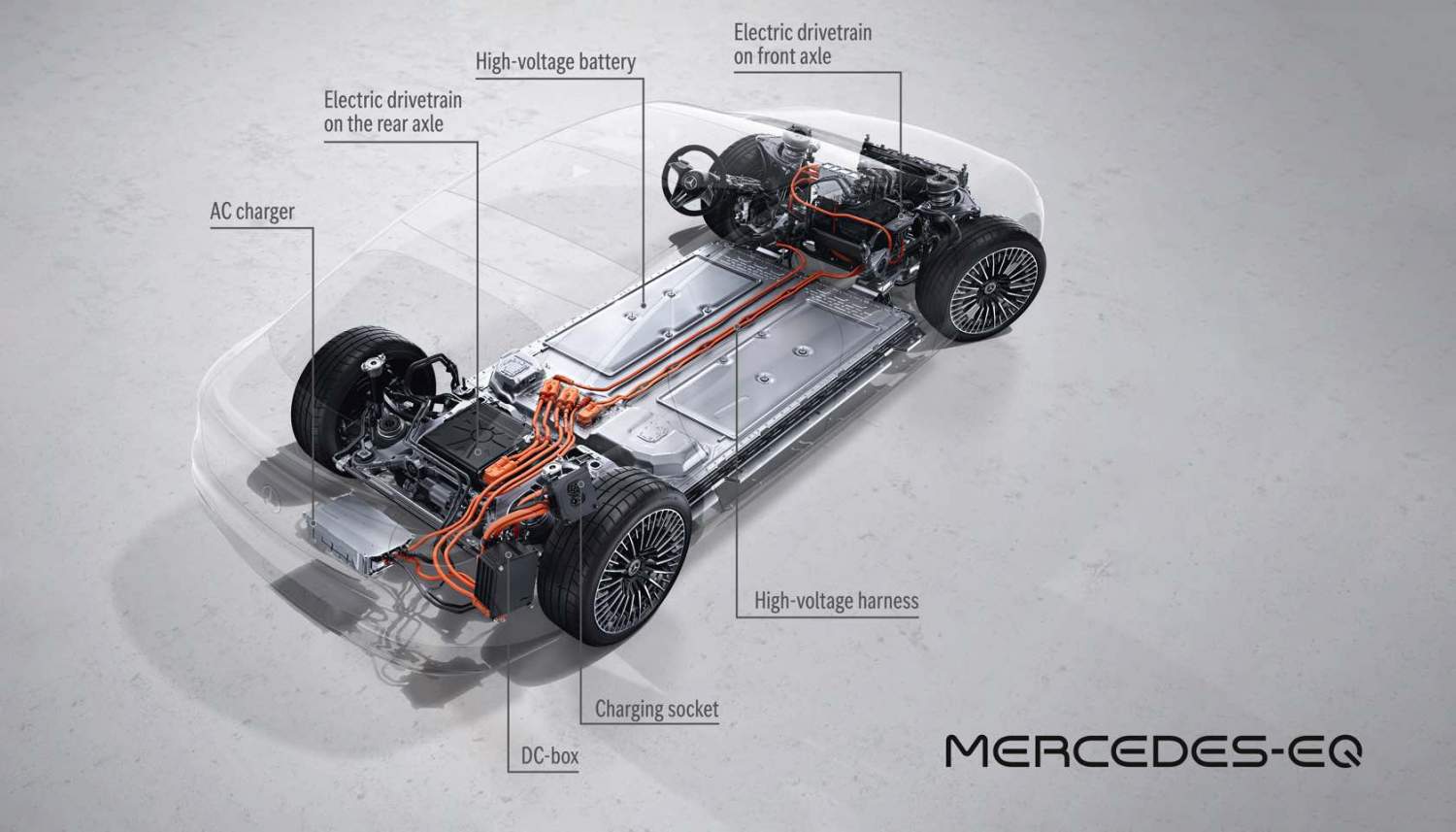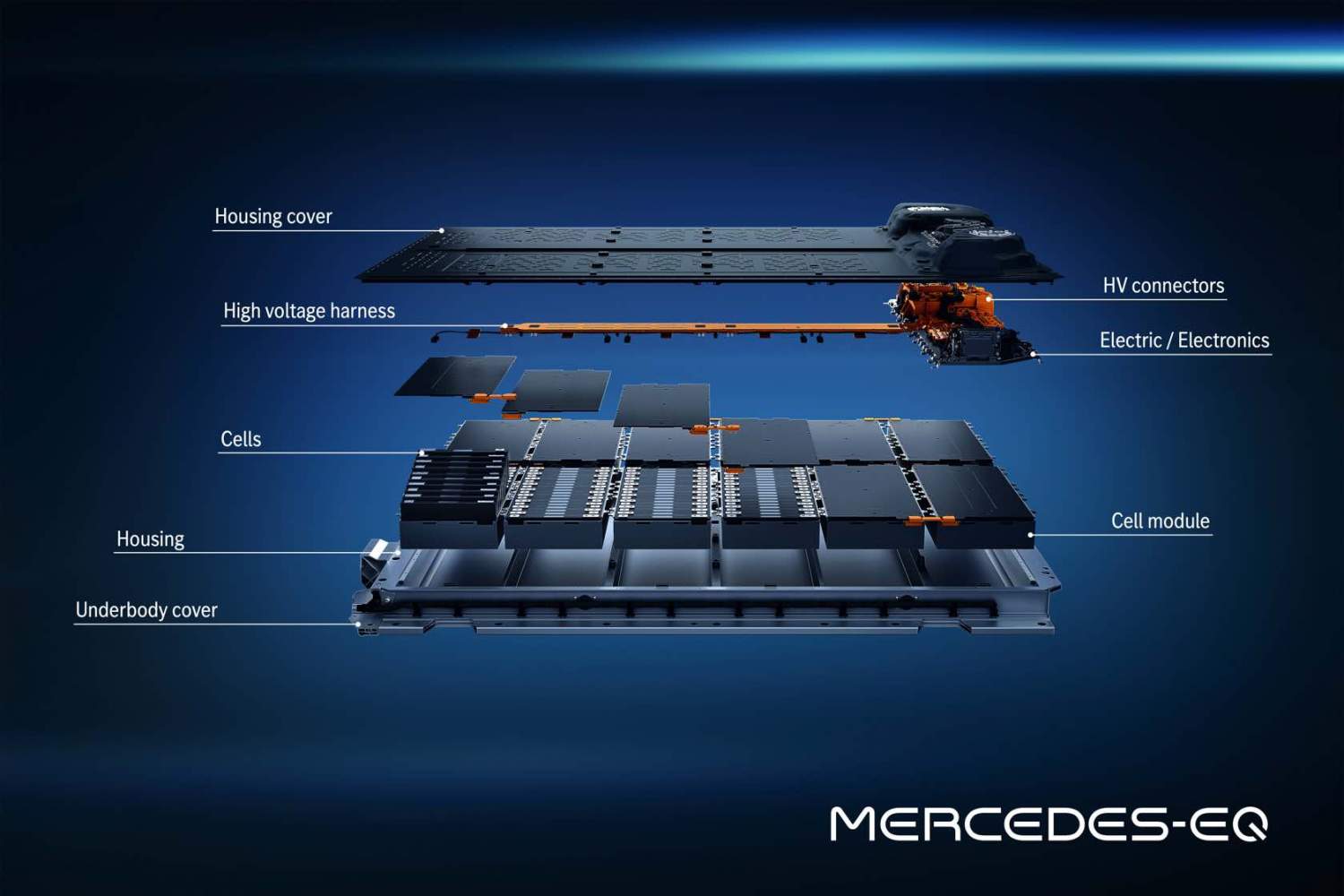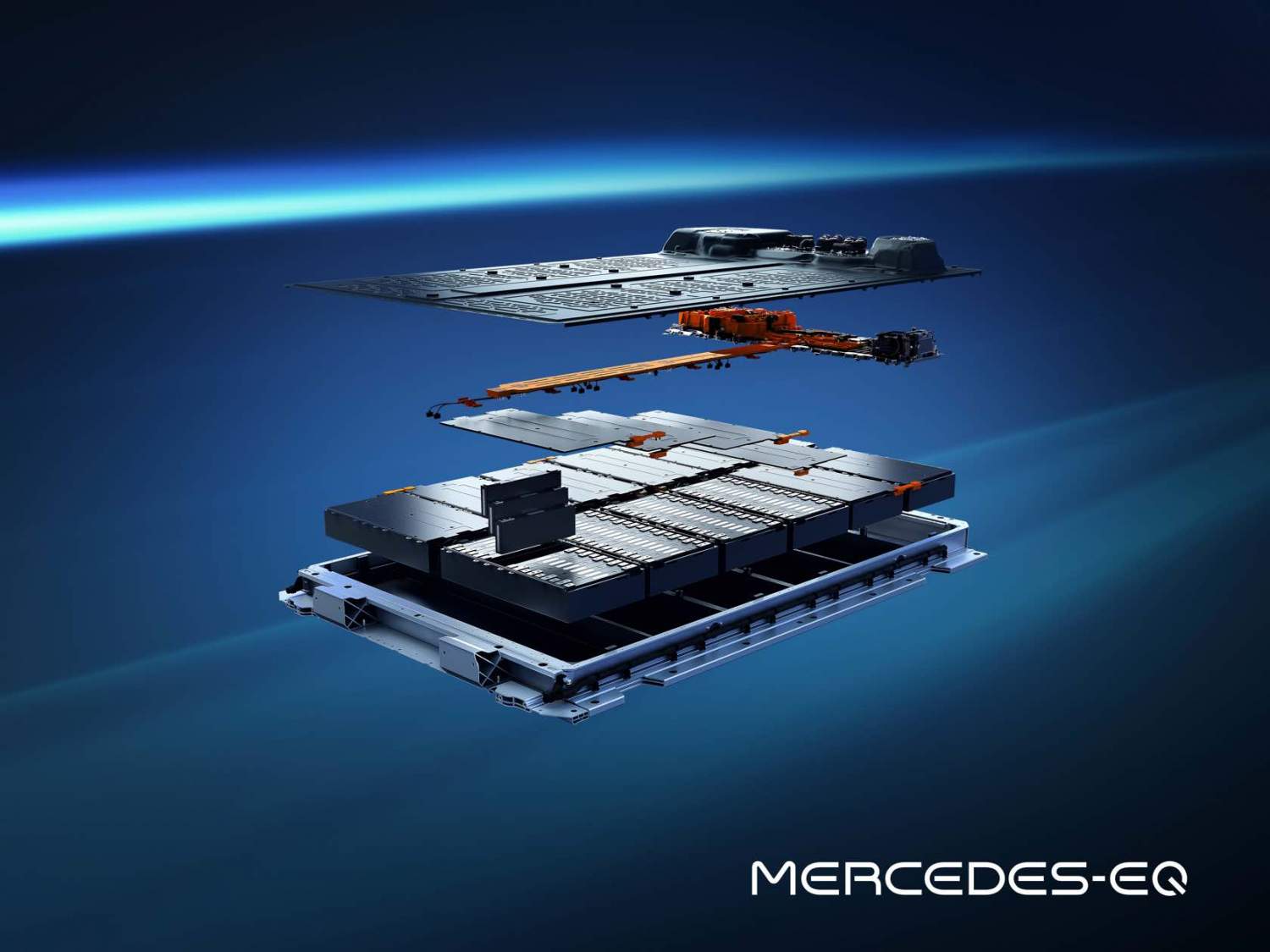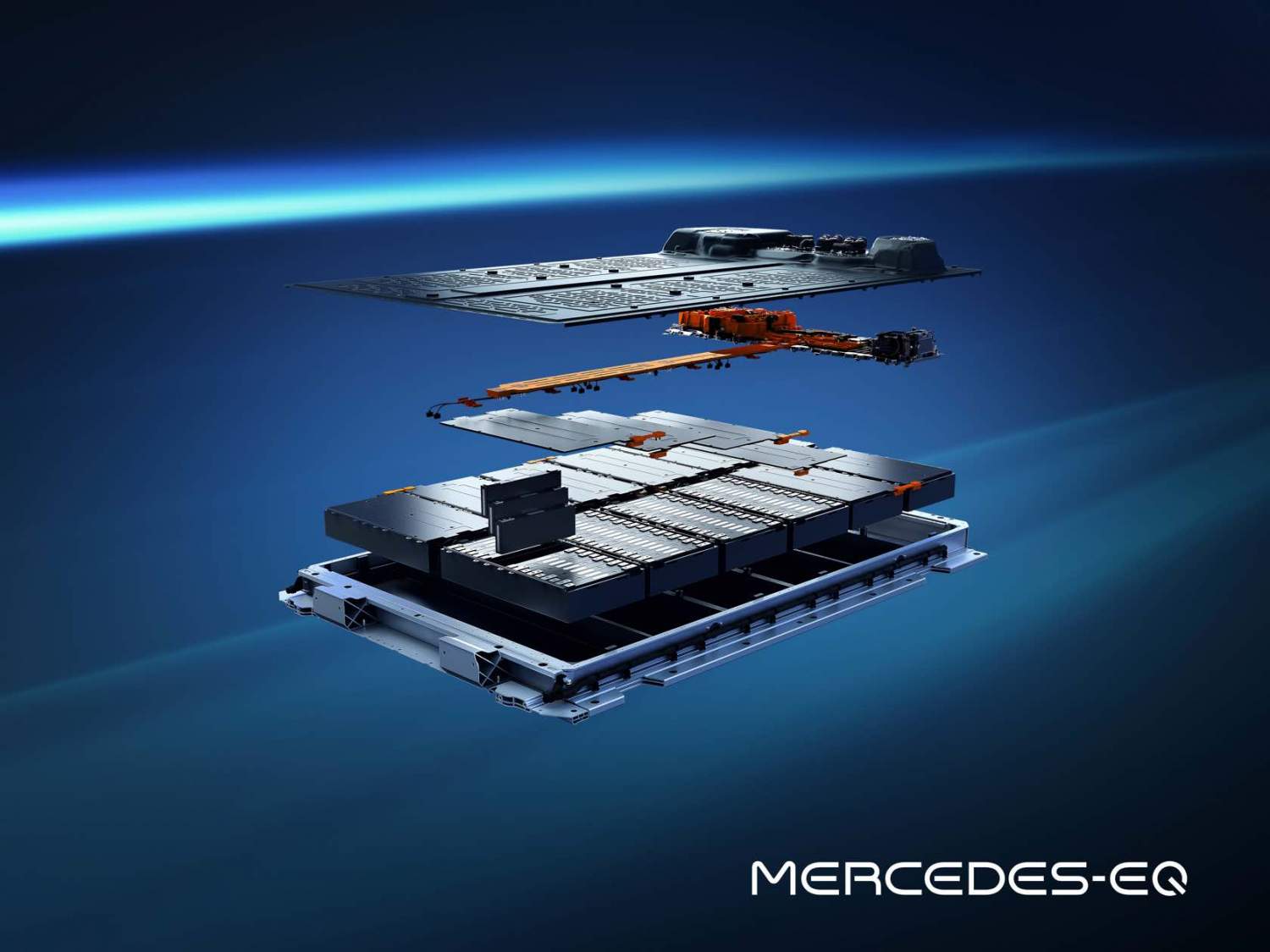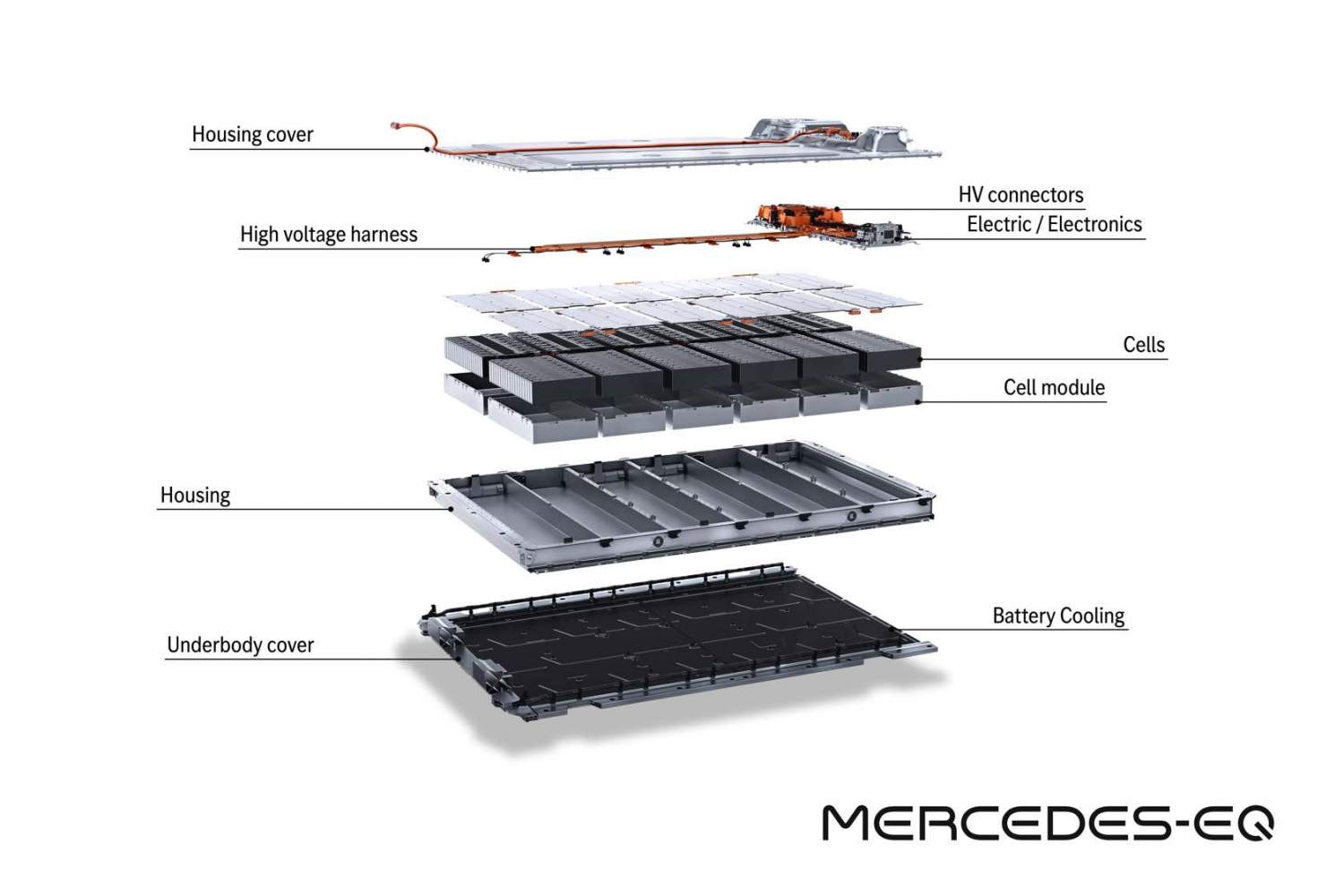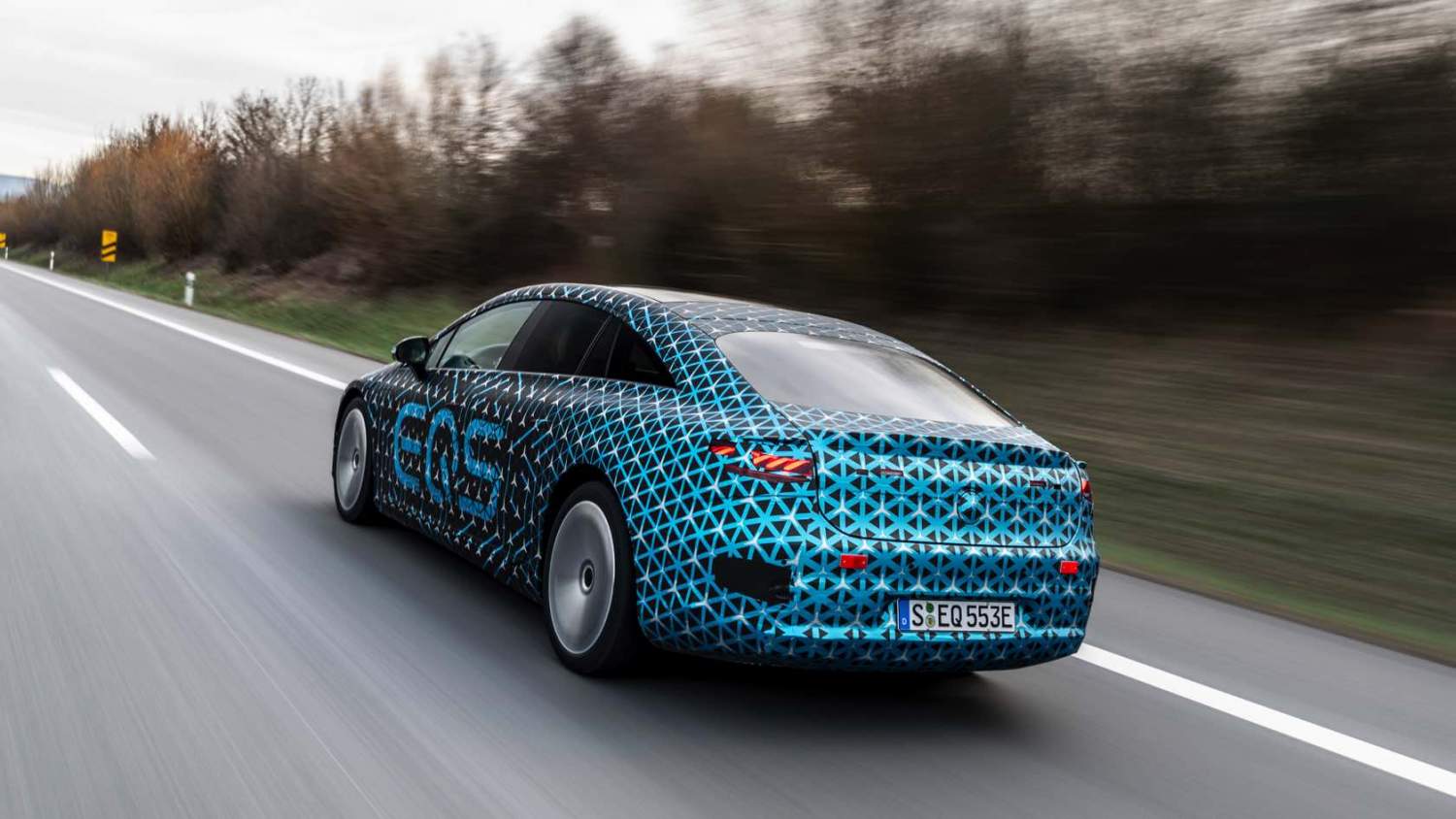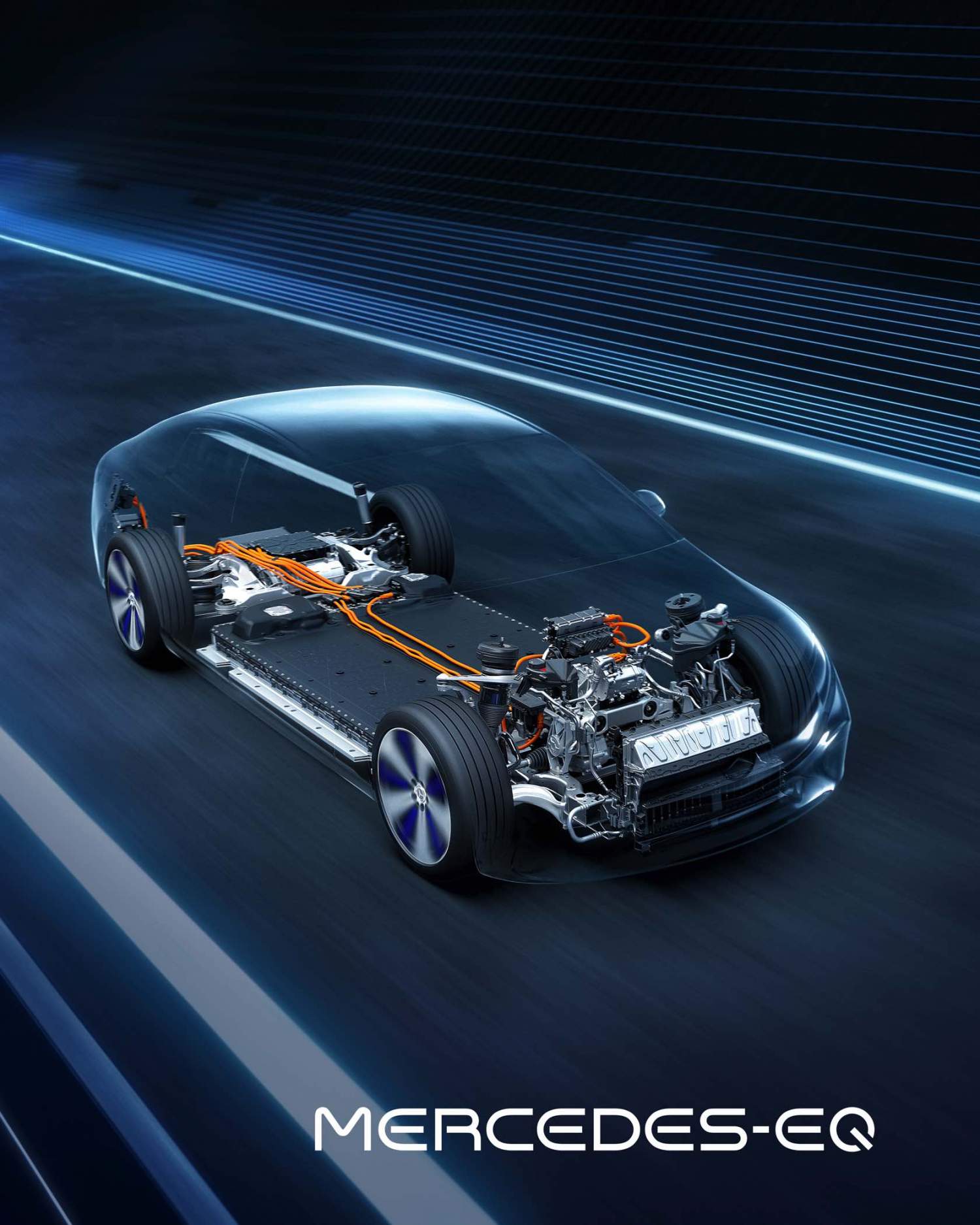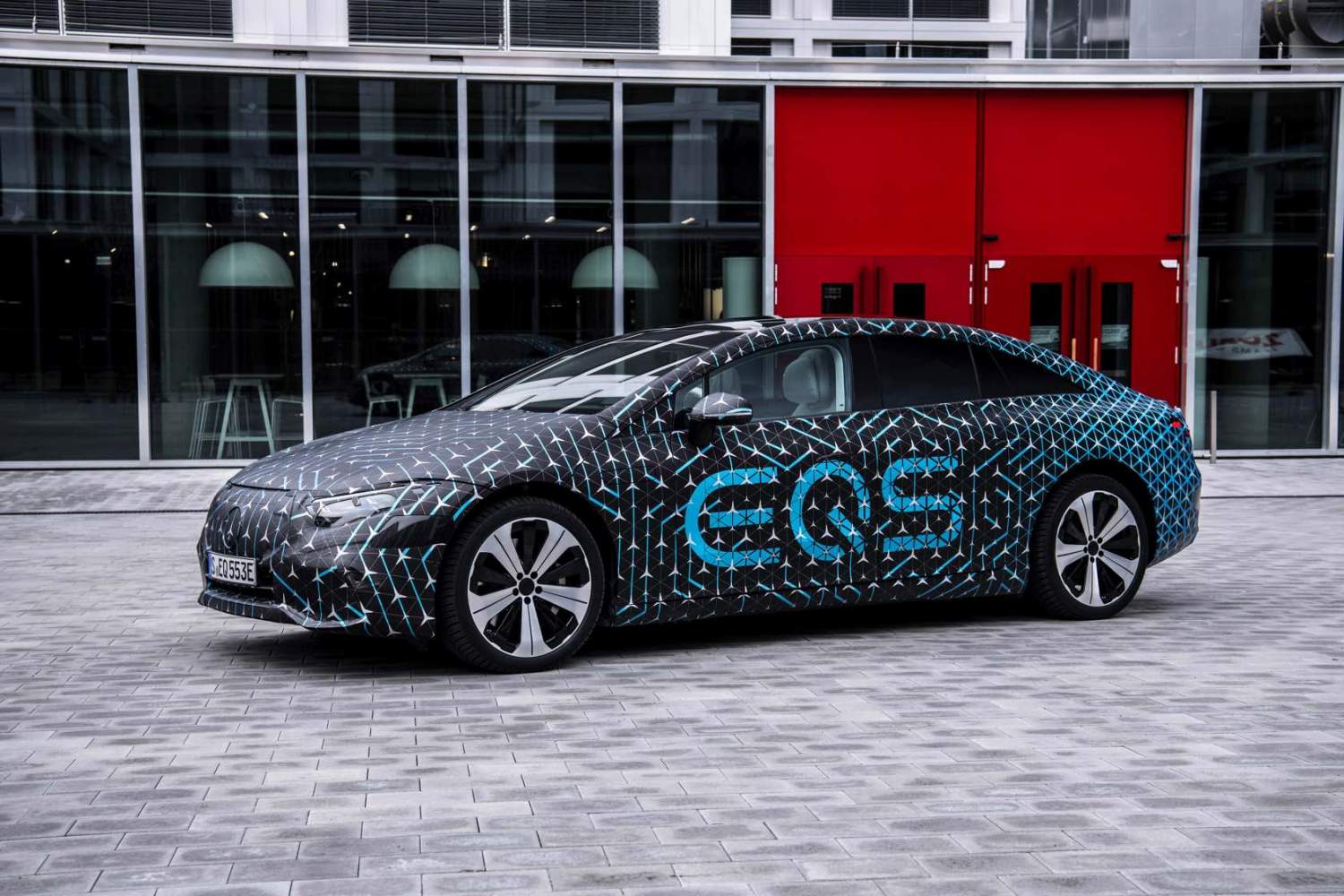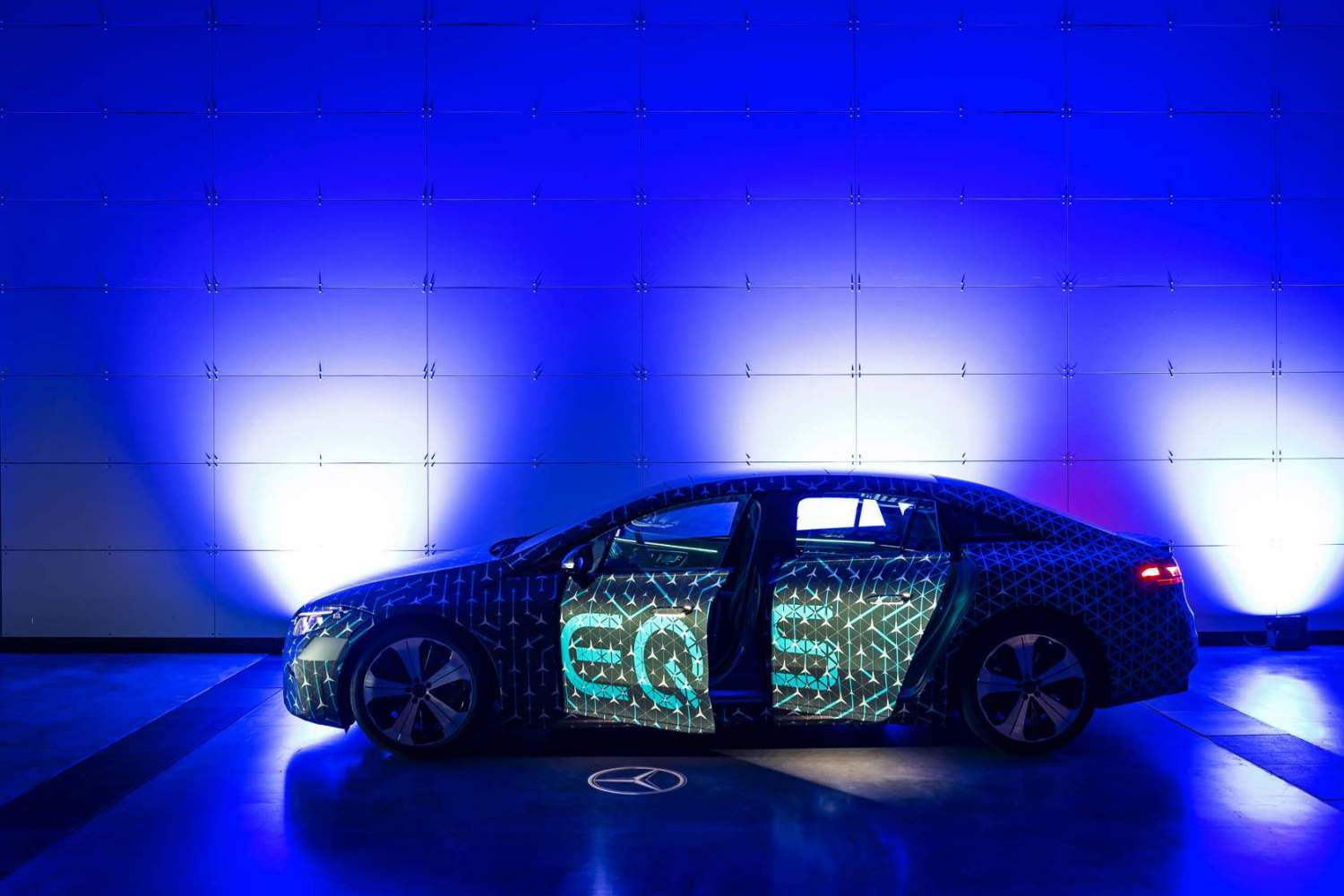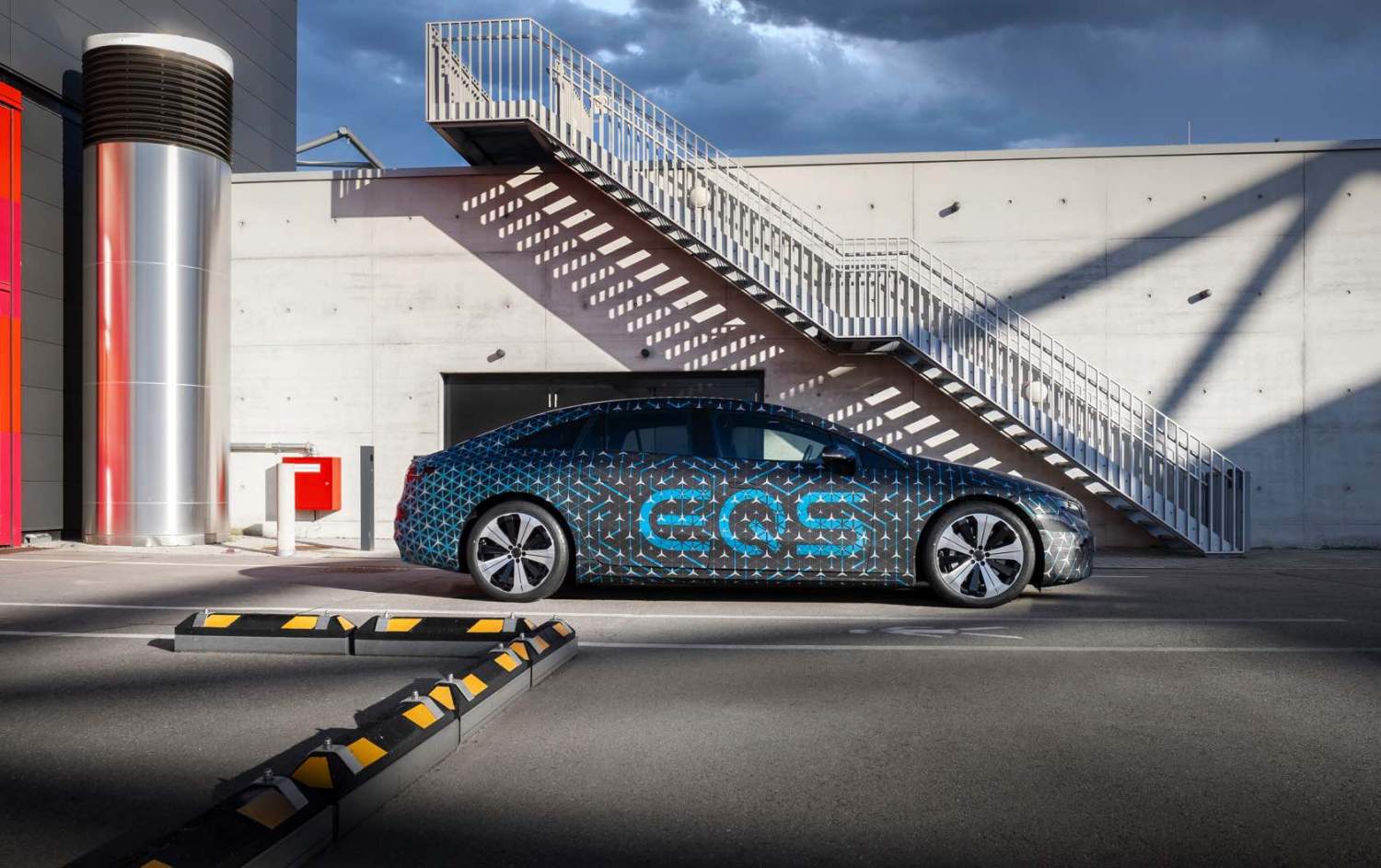2022 Mercedes-Benz EQS Virtual Co-Drive: A High-Tech Preview Of A High-Tech EV
As the world grapples with new waves of rising COVID-19 infections, businesses and large corporations – in this case, German carmaker Mercedes-Benz – are forced into figuring out new and creative tactics in promoting new products. Just as car sales are increasingly being done remotely, so too was my first experience at the wheel of the 2022 Mercedes-Benz EQS electric luxury sedan a virtual, co-piloted encounter.
I drove the EQC SUV a couple years ago before all this coronavirus madness and was also lucky enough to experience the Mercedes-Benz F 015 self-driving concept car in 2015, the vehicle on which the 2022 EQS derived its one-bow design theme. Fast forward to today, and I'm riding in the front passenger seat of the all-new EQS and marveling first-hand at the brand's eye-popping MBUX Hyperscreen display. It's not an unusual seat for me to find myself in, but this time around I'm thousands of miles away, virtually interacting with my co-driver as he gives me a whirlwind experience inside the all-new 2022 EQS.
Sharam Hami Nobari, Head of Range & Energy Efficiency at Mercedes-Benz, is the one with his hands actually on the wheel, simultaneously my chauffeur and my guide to what this important new EV will offer the automaker's customers. The headline figures he shares first certainly don't disappoint. The EQS will first arrive with a 107.8 kWh battery pack powering two electric motors for all-wheel-drive, pumping out approximately 517 hp with at least 406 lb-ft of torque.
In 4MATIC models with the Torque Shift function, the EQS rushes from 0 to 100km (62mph) in 4.3-seconds, not bad for a full-size electric luxury sedan. More intriguing is the estimated driving range. With its 107.8 kWh battery pack, the 2022 EQS achieves up to 770 kilometers or 479 miles of range using the WLTP test cycle.
Last year, Mercedes-Benz inked a deal with Chinese firm Contemporary Amperex Technology Co. Limited (CATL) to be the brand's battery supplier for the EQS, using the latter's new lithium-ion module technology. There's more to battery packs than just cells, however, and the brains behind the modular battery concept was developed in-house. For one, that helps Mercedes deliver over-the-air updates to its battery management software.
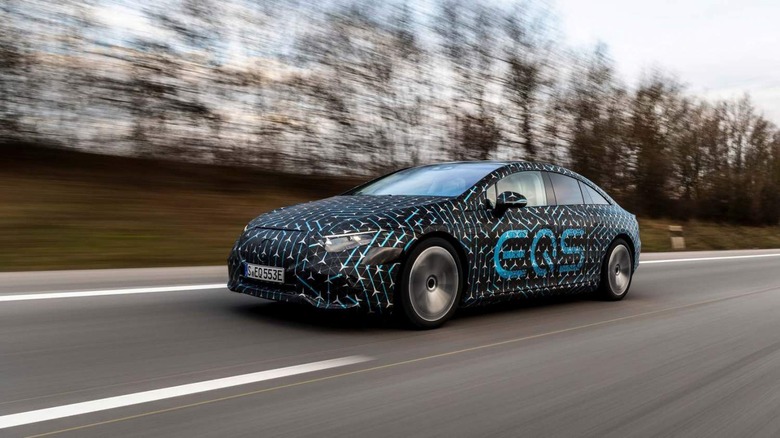
Most EV drivers would love a shorter charging time and, for EQS owners, that's the promise. With the intelligent thermal management in place, the battery is preheated or cooled down while driving in order to remain within the ideal temperature range once you reach a fast-charging station. Pugging the EQS into a 200 kW DC fast-charger for 15 minutes should get you up to 186 miles / 300 km (WLTP) worth of charge. Also available is the onboard charger for AC charging up to 9.6kW on a home Level 2 station.
Powering up the Mercedes Me app on your smartphone – or on the expansive Hyperscreen – provides access to over 500 fast-charging networks worldwide, and the commitment is that doing so will see your EQS juiced up using nothing but green energy. For owners stateside, Mercedes-Benz has partnered with ChargePoint for a seamless charging experience. Thanks to Plug & Charge, you simply open the flap, insert the connector, and the juice starts flowing into the battery.
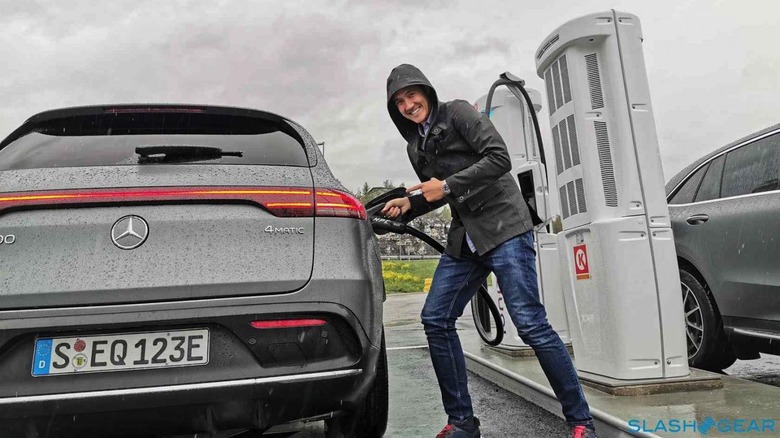
What's more impressive is using Mercedes-Benz's Navigation with Electric Intelligence to optimize the battery range fully. The shortest distance between point A to B might not be the most efficient, so the system takes into account everything from topography and route, through ambient temperature, speed, and use of HVAC – among other factors – into account when it maps out its directions.
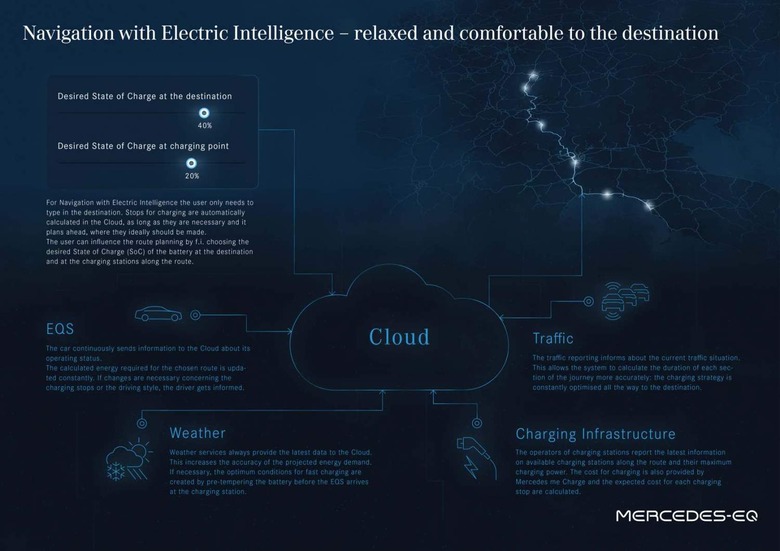
That processing takes place with the benefit both of onboard data and utilizing the power of the cloud for real-time results. Considering range anxiety remains one of the primary barriers to getting new drivers into EVs, hopefully this more nuanced approach to routing will settle a few owners' nerves.
For example, as part of my route planning, I like knowing where the charging stops are along the way – even if the system hasn't decided in advance that I should stop over at one. That's just in case I get some range anxiety myself, and decide to top off. In the EQS' case, you can let the system know you plan to do that, and it'll precondition the battery for when you arrive at the station.
Official EPA numbers are still pending, but I'm guessing 300 to 350 miles of EPA-approved range is on the cards for the 2022 EQS. Nobari also confirmed that a smaller, 90 kWh battery pack will also be available later, which I suspect will come standard in the single-motor EQS. That rear-wheel-drive variant should have 328 horsepower, and do 0 to 62 mph in around 6.0-seconds.
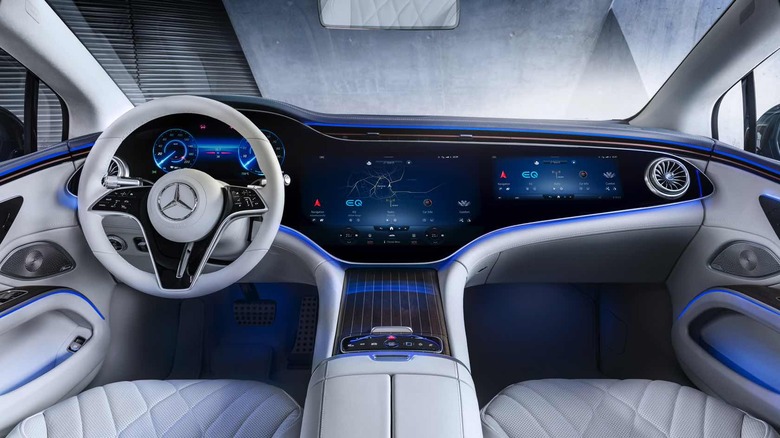
Of course, the highlight of my first-ever virtual co-drive is staring at MBUX Hyperscreen, the first in a modern vehicle, electric or otherwise. For me, what Mercedes-Benz has accomplished with the Hyperscreen in the automotive world is equivalent to when Apple gave us the iPhone back in 2007. The expansive 56-inches of screen real estate, I'm happy to share, will also be available across the EV family, including the EQA, EQS SUV, and EQE.
One screen I'm looking forward to getting past, though, is my computer display. While a co-drive is fun, there's nothing quite like getting to grips with a new car yourself – EV or otherwise – and I'm eager to see if the EQS lives up to Mercedes' big billing. We'll see the luxury electric sedan officially debut this April 15.

